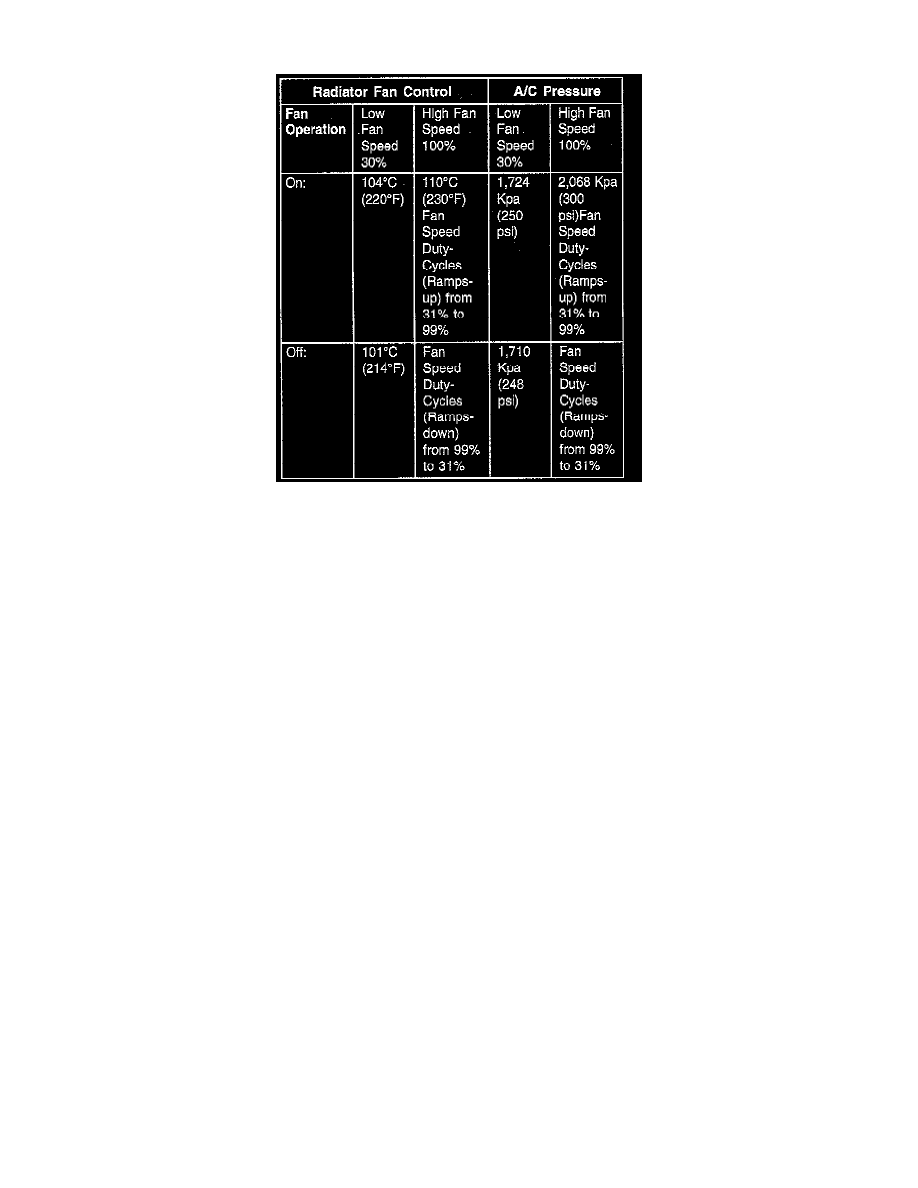Grand Voyager V6-201 3.3L VIN R SMFI (1997)

Radiator Cooling Fan Motor Relay: Description and Operation
CONTROL
Fan control is accomplished two ways.
A/C System
A pressure transducer on the compressor discharge line sends a signal to the powertrain control module (PCM) which will activate the fan.
Cooling System
In addition to this control, the fan is turned on by the temperature of the coolant which is sensed by the coolant temperature sensor which sends the
message to the Engine Controller. The fan will not run during cranking until the engine starts no mater what the coolant temperature is.
CAUTION: The radiator fan relay is attached to the left frame rail near the lower radiator support. The relay bracket, and fastener are used to
dissipate heat from the relay. Ensure the relay is properly attached to prevent the following:
^
Intermittent engine overheating.
^
Relay "thermal" shutdown, or relay damage.
THEORY OF OPERATION
The solid state radiator fan relay controls the operation of the radiator fans. One connector of the relay is supplied with fused B(+) to power fans.
This same B(+) connection powers the internal electronics in the relay.
The chassis ground connection (physical attachment to the chassis) on the relay provides a heat sink for the relay and a ground for the internal
electronics. The ground connection from the relay connector is a redundant ground for the internal relay electronics.
If the relay attachment to the chassis becomes loose or corroded, the relay could fail due to its inability to dissipate heat through the chassis
attachment.
When the relay control circuit is grounded by the PCM, current flows through the relay to the fans.
As the engine temperature rises to a preset level, the PCM will start sending a "Pulse Width Modulated" (PWM)" ground signal to the relay. The
dwell time of this signal will increase or decrease between 30% and 100% based on the engine coolant temperature and A/C pressures.
-
This method of controlling the fans provides infinitely variable fan speed.
